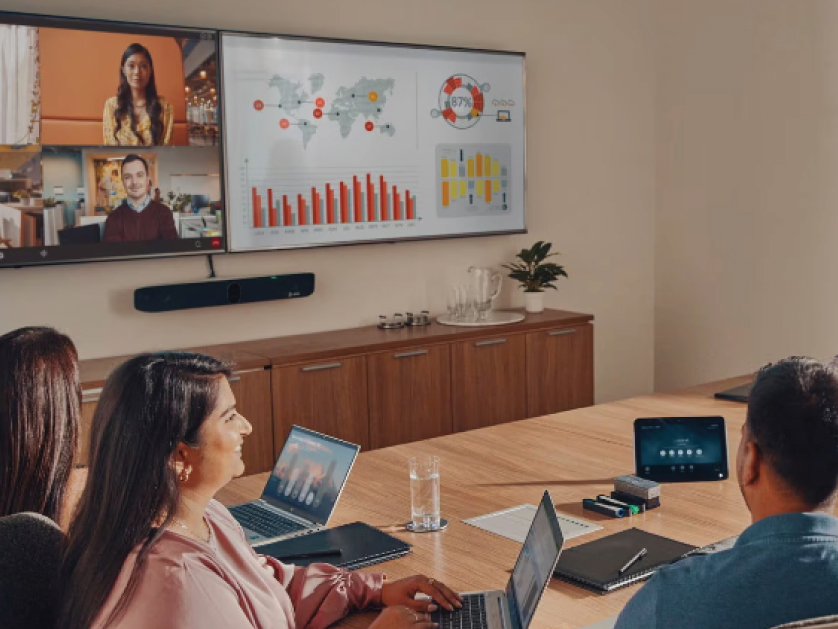Introduction
Rewind ten years or so and think about how you used to get in touch with your work colleagues. The chances are that most of your communications were done either through a phone call or an email. Back then, the collaboration tools that most of us take for granted today were still in their relative infancy. The scale of the change since, has been transformative.
According to Forbes, the average worker spends 20 hours a week using digital communication tools – for a normal full-time employee, that’s more than half their contracted time. And while Acuity Training has found that email is still the most used workplace communication channel in the UK, nearly half of employees (45%) don’t use it any more. Instead, more employees have turned to other channels, with more than 40% using WhatsApp, text messages and phone calls, and 25% using video calls.
These changes mean that organisations are having to radically pivot their communications strategies, not only from a practical standpoint, but from a technological perspective, too.
Evolution that doesn’t suit a revolution
The pace of change in workplace communications has been so quick that many companies haven’t had the time, capacity or resources to take a coordinated approach. At Visavvi, we’ve found that many organisations have a complex and piecemeal communications estate, where different teams and platforms cover telephone, meeting rooms, networking collaboration and so on. Indeed, a surprising amount of organisations don’t even have full visibility around what technologies they currently have licences for, making it nigh-on impossible for them to adapt or prepare for the future.
While in previous years, organisations may have been able to depend on their existing systems, the major shift towards flexible working post-pandemic has exposed shortcomings in many legacy comms estates. According to Gartner, 55% of employees perform highly when they have high levels of working flexibility, compared to 36% of those still working full-time in the office. More employees want flexibility over how, when and where they work, and facilitating that without compromising productivity means providing ways for easy collaboration with other employees.
Why Converged Communications is the answer
Microsoft has long led the way with collaboration solutions, with the likes of Teams Rooms and Teams Phone. Rooms has delivered meeting room software and hardware that connect physical and virtual participants perfectly, while Phone enables voice calling to be integrated into the wider Microsoft Teams collaboration platform with all other comms channels.
This was then taken further in February 2023 when Microsoft launched Teams Premium, an add-on package for Microsoft 365 subscribers that enhances the experience with personalised intelligent meetings, virtual appointments, and advanced management and reporting capabilities.
But, recognising the need for a catch-all solution, these three functions have now been rolled together into the comprehensive Microsoft Converged Communications package. This integration acknowledges that modern communication tools are deeply interrelated and cannot be viewed in isolation. The value lies in the holistic solution, not its individual components.
This means that, however disjointed and lacking integration a current comms estate might be, organisations can now completely transform it and embrace an interconnected, flexible, omnichannel future – all through a single platform and a single vendor.
Levelling up efficiency with Copilot AI
In the current climate, every organisation wants to know how AI can work for them across all their technology, and Microsoft Converged Communications is no exception to this. In November 2023, Microsoft launched Copilot for 365, and its AI capabilities can now be integrated into the Converged Communications package.
Copilot for Microsoft 365 can assist in a range of collaboration and communication settings such as suggesting follow-up questions after calls, generating summaries of calls and meetings with comments attributed to each participant, and even voice optimisation for people connecting virtually.
The benefits of adding Copilot for Microsoft 365 into the collaboration mix can’t be overstated. According to Microsoft’s findings among users:
- 86% say Copilot makes them more productive
- 81% say it helps them complete their work quicker
- 71% say it reduces time spent looking for information
- 84% say they don’t want to go back to working without Copilot
A platform for the future
Smooth communications across multiple channels, wherever and whenever employees are working, can be a real game-changer for productivity and organisational efficiency. But the transformational effect can go so much further than that.
When employees can be productive and work flexibly without compromise, they’ll be happier and more motivated in their jobs, which supports better talent retention and acquisition. The IT team can more easily manage, maintain and enhance comms services by only having to deal with one platform and vendor, instead of several simultaneously. And the organisation at large can gain a new level of insights into how well the workforce communicates and collaborates with each other, and identify areas to make further improvements over time.
But even though Microsoft Converged Communications can unlock all this potential, it has to be remembered that every organisation is different. And that’s why it’s so important to take a tailored approach to its deployment, so that the right channels and functions are aligned with the specific needs of the organisation and the workforce – today and tomorrow.
With our end-to-end full-stack offering, deep expertise in design and deployment, flexible approach and tailored consultancy services, Visavvi are the ideal partners for transforming your comms estate.
Download our factsheet to learn more or contact us today to start your Microsoft Converged Communications journey.



